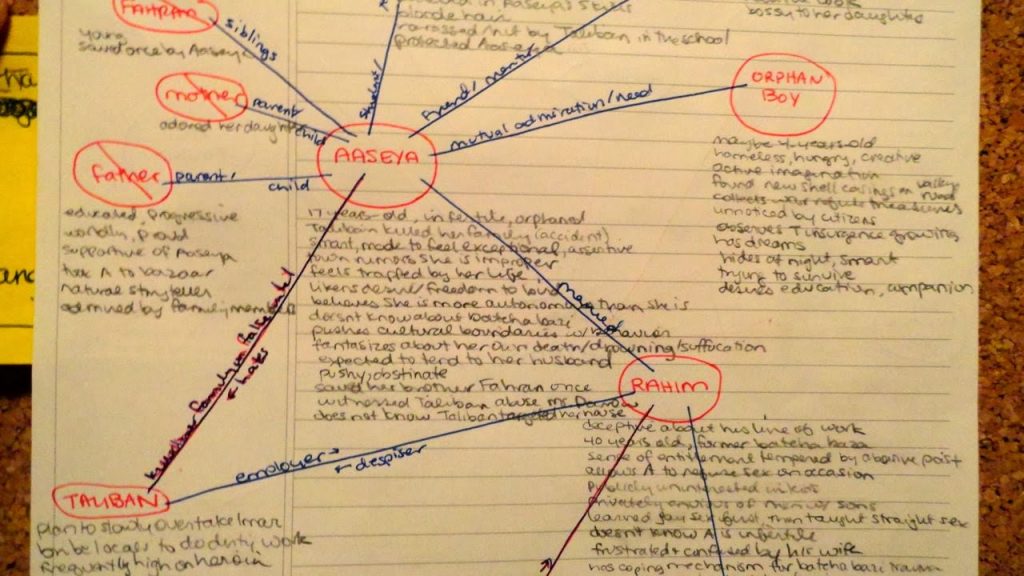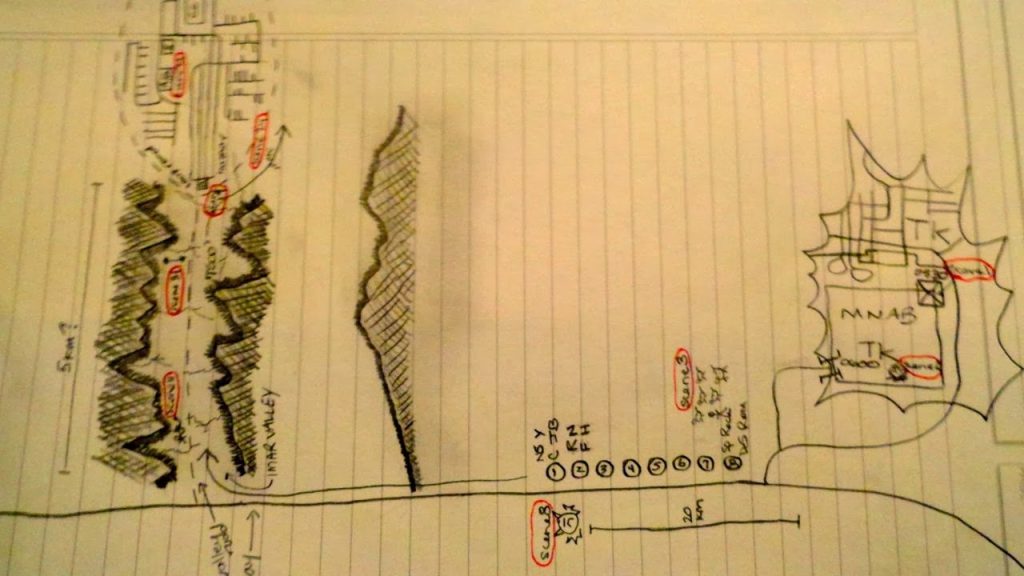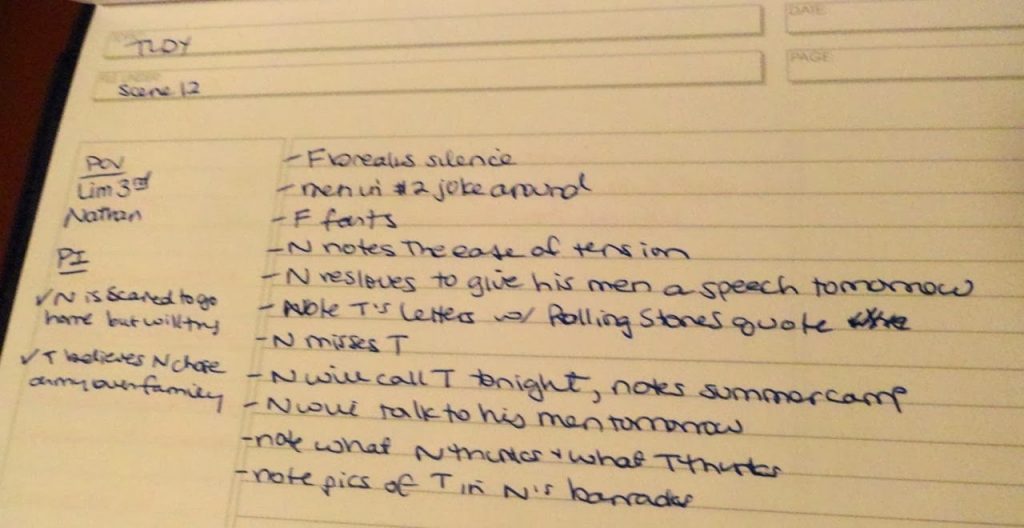In addition to
reverse outlining, this week I focused on making simple maps of how my characters are connected to one another and how they move across the map of the fictional village of Imar in Afghanistan. I’m 43 scenes in and so far I’ve learned that my balance between present narrative and flashback is pretty good (that’s a result of my
first pass through revising the manuscript…not the punch-drunk of the first draft!). I’ve also learned that what I thought was a limited 3rd point of view narrator on Rahim in some sections and a different limited 3rd point of view narrator on Aaseya in other sections is actually the same narrator. The tone, confidence, and style are all the same. So I don’t know what technical name there is for this kind of narrator–because it’s not wholly omniscient–but I do know it can see the world both through Rahim and Aaseya’s eyes and that, so far, I think it’s working. Depending on the moment, it resides more with one versus the other. Is that “allowed” in fiction? With certain scenarios, yes, I think so. Do have I have consistent scenarios that warrant it? I’m thinking so; but the closer I look and the more critical distance I gain, the better I’ll be at answering that question.
Isolating each scene and definitively deciding where it starts and ends is also giving me confidence that I can move certain scenes around with more ease than I initially thought. There’s some crucial information that needs to appear earlier in the novel, for example a
change on ROE (rules of engagement) orders that come down from Higher and directly effect the mission at hand. Now that I know which scenes contain that information, and where those scenes begin and end, I can more confidently attempt amputating and grafting, for lack of better terms. Notice I say “can,” meaning I haven’t done it yet. I intend to, but like all good forward momentum, I can’t interrupt myself and start tweaking things too soon. I’ve got to finish this reverse outlining before flying out to the AWP Conference next week (ack!). Somehow, I imagine that being able to hold each scene in my hand on a little slip of paper, makes me feel like I’ll be able to do some necessary and deep thinking about the novel amidst the travel and hum-buzz-overwhelm-excitement of these upcoming events.
The character map, a la Wonderbook‘s suggestions, is teaching me which characters I can cut and which ones are lacking in development. It’s reiterating the fact that too many character in my book haven’t been physically described at all. And it’s showing me that some characters relate to the same character in very, very different ways. That all seems obvious, but seeing it via a visual representation with some shorthand notes alongside will further give me something to ponder as I fly, drive, snowshoe, beach run, and gab-gab-gab my way through the next few weeks. Here are a few snapshots of how things are shaping up and, for what it’s worth, I’m going to make this much larger on butcher paper after I travel. For now, it all needs to be portable:
 |
| Aaseya & Rahim have drastically different relationships with the Taliban; Rahim never new Aaseya’s siblings; Rahim hasn’t met the Orphan Boy yet; and the characters with slashes through their names are dead. |
 |
| North, South, East and West! Now I can describe the convoy’s movement more consistently and accurately, and I know where crucial scenes (circled in red) occur on the map, and I know which roads are named what. I also have visual representation of the tightness of the Imar Valley, which matters because claustrophobia and a feeling of being unable to escape both physically and psychologically are a theme in the novel. |
 |
| Not as telling, but basically each and every action is noted even it if it just a thought, pertinent info (PI) is checked on the side margin along with POV, and each scene is numbered. Character names are abbreviated with letters (F = Folson, as in, “Folson farts” on line three of this entry for Scene 12.) |




